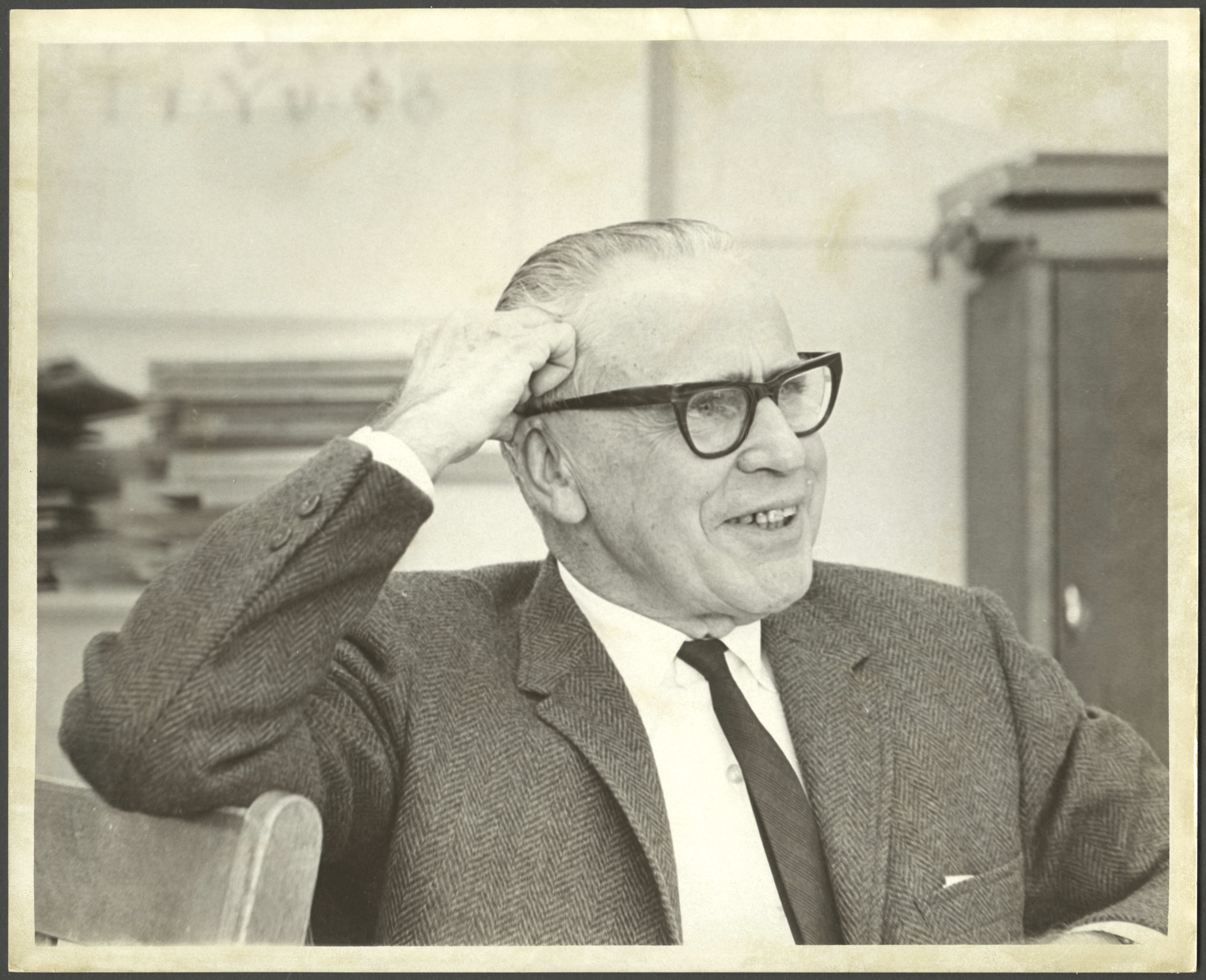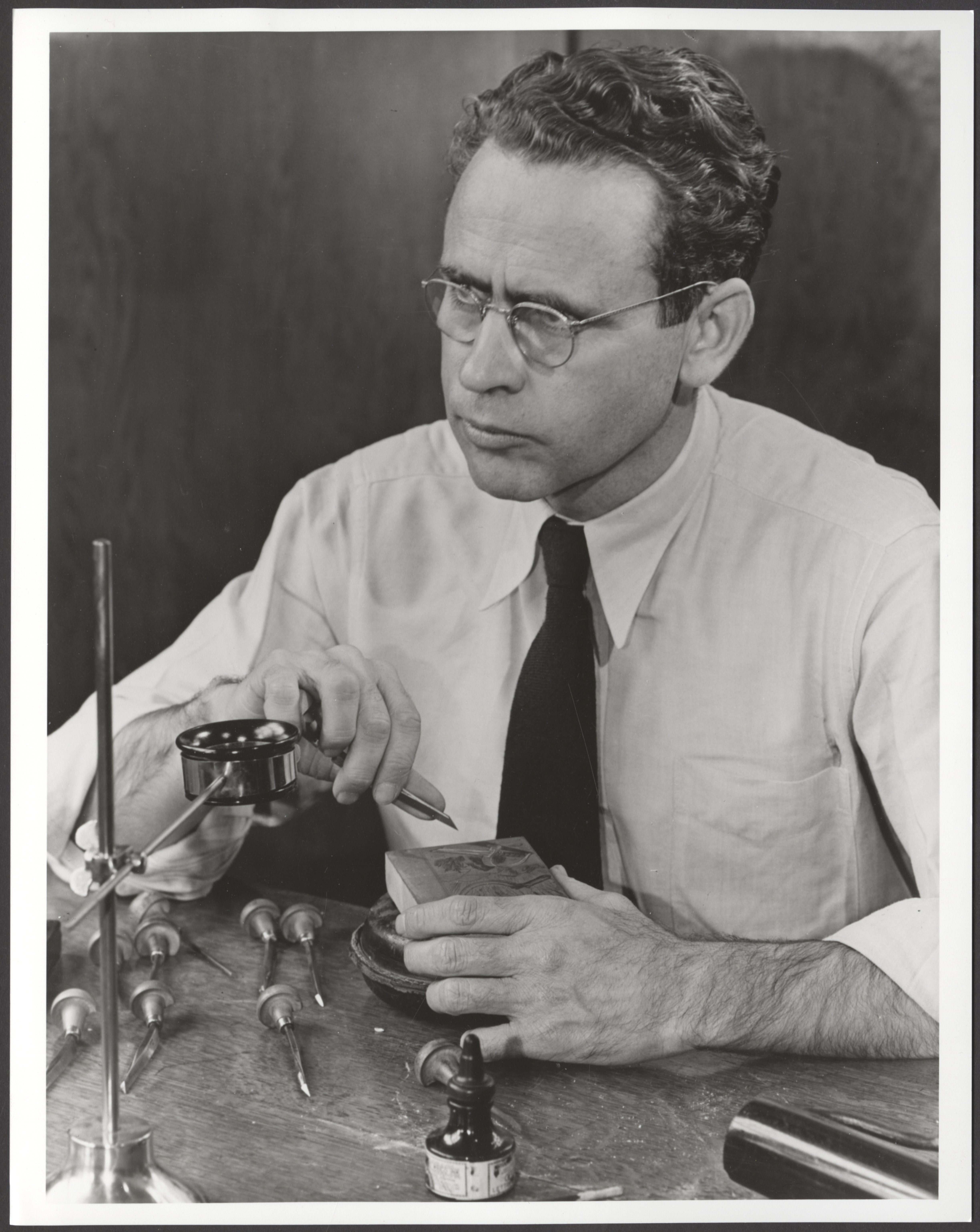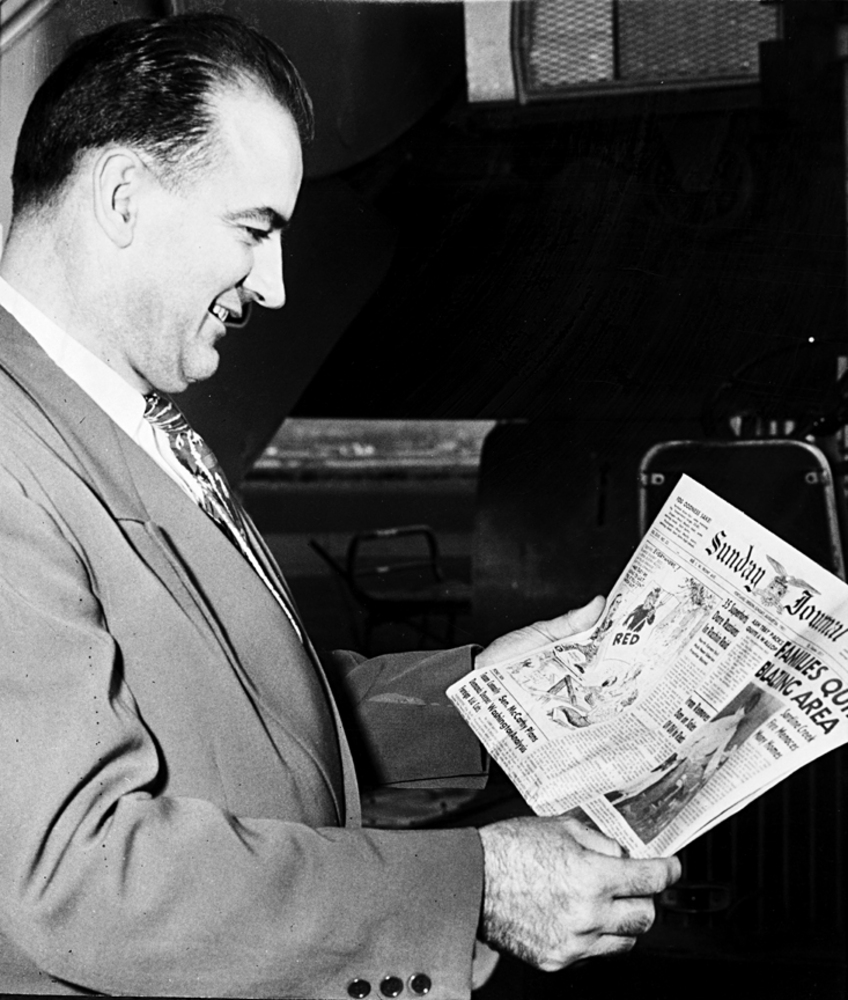Lloyd Reynolds is an iconic figure in Pacific Northwest calligraphy. He not only inspired generations of students, but he also strongly influenced the aesthetics of Portland and the spread of calligraphy and fine handwriting throughout the country. As a professor at Reed College, he introduced cursive italic, a Humanist hand developed during the Italian Renaissance in the fifteenth century, to thousands of students at Reed and to many outside the college in workshops and lectures, classes, and a televised series during the 1960s and 1970s. His passion was to introduce beautiful handwriting to everyone. Everyone writes, he said, and that writing should be readable and beautiful.
Born in 1902 in Bemidji, Minnesota, Reynolds' family moved to Portland when he was twelve. He attended Franklin High School and earned bachelor’s degrees from Oregon State University in forestry and the University of Oregon in English literature. After a stint in commercial lettering and advertising in 1924–1925, which was not to his liking, he taught for two years at Roseburg High School before earning his master’s degree in English literature from UO.
Reed College hired Reynolds as an instructor in 1929 to teach creative writing and English. He discovered calligraphy in the 1930s and began teaching himself and reaching out to other calligraphers in the U.S. and England. In the late 1940s, he started the Graphic Design Workshop at Reed, teaching the graphic arts of printing, printmaking, and calligraphy and later adding art history.
Reynolds learned calligraphy through research and practice, and he discovered that studying historical examples of handwriting was the best way to teach it. He used the work of Edward Johnston, Writing and Illuminating and Lettering (1934), as a major resource. His teaching focused on the Humanist hand of italic cursive, but he also taught many other letterforms and styles of handwriting. .
During the McCarthy era, Reynolds took the Fifth Amendment before the 1954 Velde Committee hearings of the House Un-American Activities Committee (HUAC) when questioned about his ties to the Communist Party. Reed suspended him, and two other faculty members, from teaching that summer. He was reinstated for fall term.
Reynolds taught calligraphy classes at the Portland Art Museum, Marylhurst College, Haystack Summer Workshops, and most particularly for teachers in the Portland Public Schools, where calligraphy was widely adopted for some years. His students who went on to teach and spread the beauty of calligraphy included Jaki Svaren, Charles Lehman, Sister Josepha, Marilyn Holsinger, Georgianna Greenwood, and Inga Dubay and Barbara Getty, who created classes and a workbook that have helped generations of doctors and others to achieve readable handwriting,
Reynolds wrote widely and gave lectures across the country. He spearheaded an important exhibit in Portland in 1958, Calligraphy: The Golden Age and its Modern Revival, which arguably introduced calligraphy to the Pacific Northwest. He also brought Father Edward Catich to Reed to teach and do stone-cutting. Reynolds retired from Reed as professor of art in 1969 in order to care for his wife Virginia, but he continued to teach the teachers. His former student, Robert Palladino, took over the department until 1984.
In two televised series of twenty sessions each, Reynolds taught italic cursive, produced first in black and white (1968) and later in color (1975). The response to the series was so great that it was aired fourteen times. Reynolds’s work also was known across Europe, and his many friends in England, including Alfred Fairbank and Arnold Bank, informed the progress of American calligraphy. In 1952, Reynolds was a founding member and American vice-president of the Society for Italic Handwriting in England. He later established its Western American Branch, which morphed into the Portland Society for Calligraphy in 1983.
Governor Tom McCall named Reynolds Calligrapher Laureate of Oregon in 1972. Reed College honored him with a doctorate of humane letters in 1972, and he received the Governor’s Award for the Arts in 1978. Reynolds died in October 1978.
Many of Reynolds’s students entered the fields of typography, type design, and graphic arts and achieved impressive careers, including Sumner Stone, Kris Holmes, Chuck Bigelow, Michael McPherson, and Margot Voorhies Thompson. His classes at Reed influenced poets such as Gary Snyder, Philip Whalen, Lew Welch, and Mary Barnard. His memory remains alive in Oregon among many groups of dedicated calligraphers who learned from him or his students and who still refer to his work and teachings.
-
![]()
Lloyd J. Reynolds, 1967..
Courtesy Special Collections and Archives, Eric V. Hauser Memorial Library, Reed College
-
![]()
Lloyd J. Reynolds engraving a woodblock, c. 1930s..
Courtesy Special Collections and Archives, Eric V. Hauser Memorial Library, Reed College
-
![Reed Coll. art professor Lloyd Reynolds (left) at House Un-American Activities Committee hearing, June 19, 1954.]()
Reynolds, Lloyd, HUAC, Jul 1954, bb004581.
Reed Coll. art professor Lloyd Reynolds (left) at House Un-American Activities Committee hearing, June 19, 1954. Oreg. Hist. Soc. Research Lib., bb004581
Related Entries
-
![McCarthy Era (late 1940s-late 1950s)]()
McCarthy Era (late 1940s-late 1950s)
As Woody Guthrie observed at the dawn of the McCarthy Era in 1947, "Por…
-
![Reed College]()
Reed College
Situated on 116 acres in southeast Portland, Reed College enrolls nearl…
Related Historical Records
Map This on the Oregon History WayFinder
The Oregon History Wayfinder is an interactive map that identifies significant places, people, and events in Oregon history.
Further Reading
Lloyd J. Reynolds papers. Reed College Special Collections and Archives. https://archivesspace.reed.edu/repositories/2/resources/65 Accessed August 29, 2019.
Walker, Gay. "Lloyd Reynolds, Robert Palladino, and Calligraphy at Reed College." Reed College. https://www.reed.edu/calligraphy/history.html





